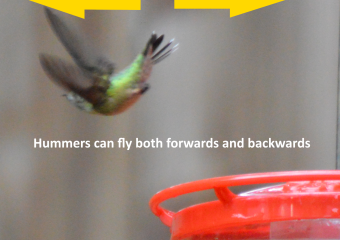Ultimate Guide to Black-Chinned Hummingbirds: Insights & Facts
Black-chinned Hummingbirds: Migratory Patterns, Preferred Plants, and Fascinating Behaviors
Black-chinned hummingbirds, distinguished by the males’ characteristic black chins edged with a brilliant purple band, are remarkable creatures known for their agility and fast-paced lifestyle. Delving into their migration habits, breeding behaviors, and diet provides a glimpse into the intricacies of their lives, which revolve significantly around their movement and survival strategies.
Migration and Wintering Habits of Black-chinned Hummingbirds
These tiny birds undertake a lengthy migration each year, showcasing their resilience and adaptability. Black-chinned hummingbirds breed across the western United States and parts of western Canada. As the temperatures drop, they embark on a southward migration to their winter homes in western Mexico and the Gulf Coast of the U.S. This migration is crucial not only for survival during the colder months but also for finding abundant food resources.
Interestingly, black-chinned hummingbirds typically migrate alone, a common trait among hummingbird species. They travel during the day, navigating and feeding on the nectar of various flowering plants along their route. This daytime travel is essential as it allows them to maintain the energy levels necessary for such a demanding journey.
Preferred Plants for Nectar
When it comes to feeding, black-chinned hummingbirds have a particular fondness for certain plants that are rich in nectar. One of their favorites is the trumpet vine, a plant renowned for its large, trumpet-shaped flowers that produce abundant nectar. These plants not only provide essential food but also offer a vibrant habitat for the hummingbirds during their breeding season. Other favored nectar sources include honeysuckle, wild bergamot, and penstemon, which help sustain them throughout their breeding and wintering periods.
Breeding Behaviors: Nest Building and Chick Rearing
During the breeding season, it is primarily the female black-chinned hummingbird that takes on the responsibilities of nest building and chick rearing. She meticulously constructs a tiny cup-shaped nest using plant fibers, spider webs, and other soft materials, often attaching it to a branch with the spider silk acting as a secure adhesive. The nests are marvels of natural engineering, designed to expand as the chicks grow.
The male black-chinned hummingbird does not assist in nest building or the direct care of the young. Instead, his role focuses on territory defense and attracting mates through spectacular aerial displays and the humming sound produced by his wings and tail feathers.
Diet and Longevity
The typical diet of a black-chinned hummingbird revolves around nectar from flowers, providing the high energy their rapidly beating wings require. However, they are also adept insect hunters, capturing bugs in flight, which are crucial for protein especially during the breeding season to support their young.
Black-chinned hummingbirds can live up to ten years in the wild, although a lifespan of 3-5 years is more common due to the challenges they often face, such as predation and harsh weather conditions.
Fun Facts About the Black-chinned Hummingbird
To add to their fascinating profile, one fun fact about black-chinned hummingbirds is their remarkable memory. Despite their small size, they possess an incredible ability to remember every flower they have visited and how long it will take each flower to refill. This efficient feeding strategy ensures they maximize their energy intake without wasting time revisiting empty flowers.
Conclusion
The life of a black-chinned hummingbird is full of challenges and excitement. From their solo migratory journeys to their unique dietary habits and remarkable nesting behaviors, these birds are a testament to the complexity and resilience of nature. Understanding more about their lifestyle and habits not only satisfies our curiosity but also enhances our appreciation for these tiny, vibrant creatures and the delicate ecosystems they inhabit.






